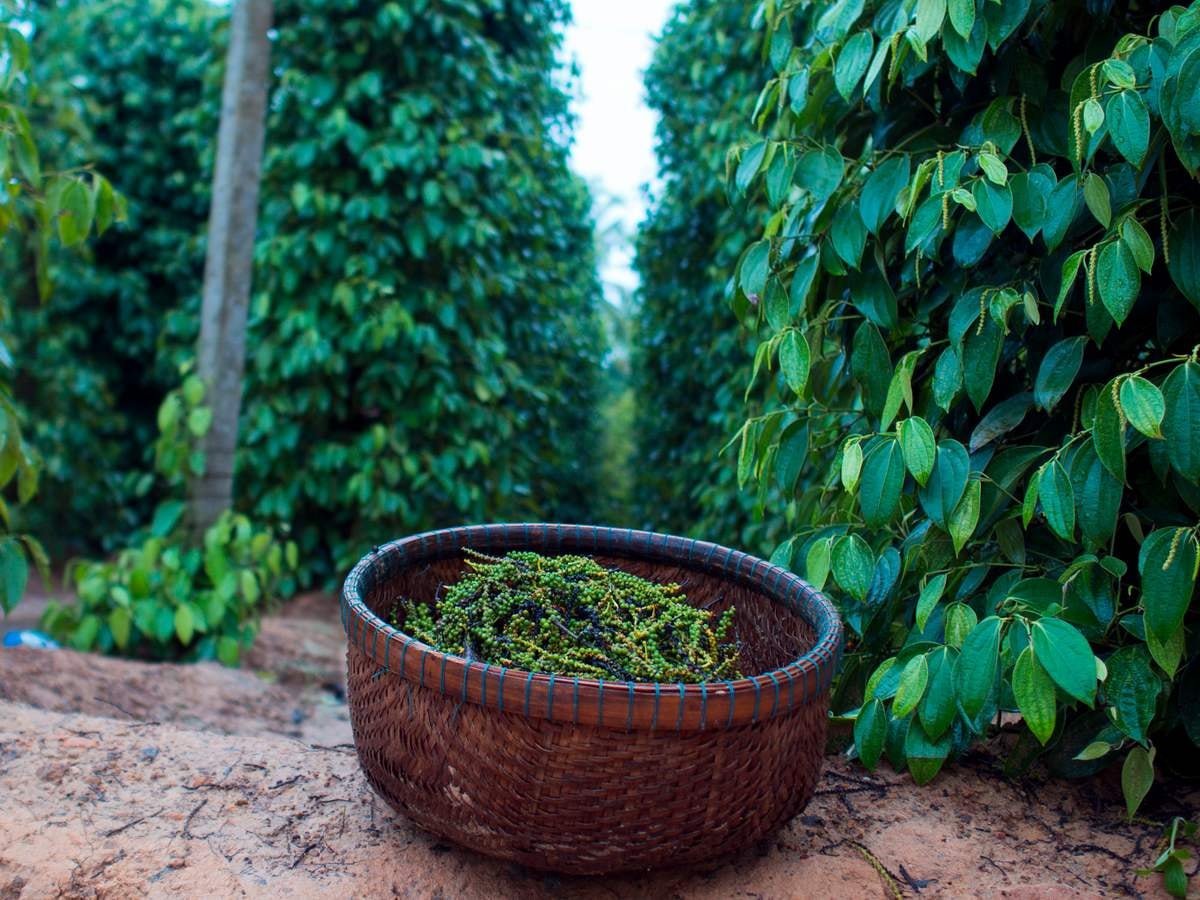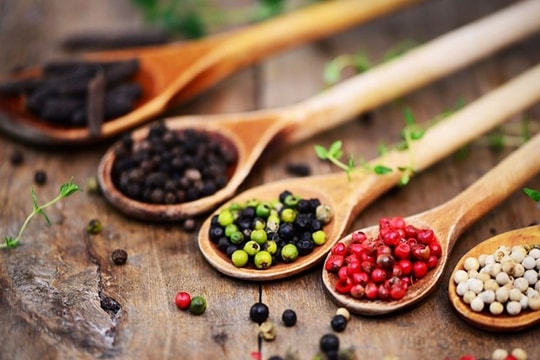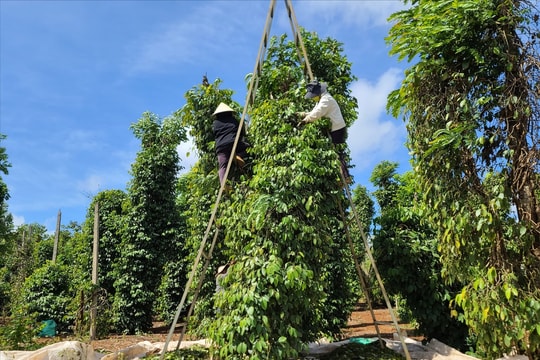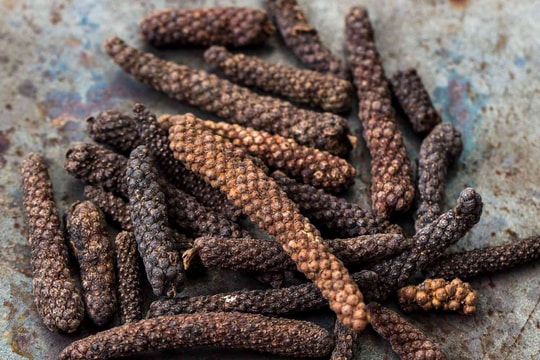Pepper price today 11/18/2025 increased dramatically
Pepper prices today, November 18, 2025, increased by 500 VND/kg, fluctuating between 144,000 - 146,000 VND/kg. This price brings profit to farmers but the profit margin has decreased.
Domestic pepper price today November 18, 2025
Specifically, Dak Lak pepper price was purchased at 146,000 VND/kg, an increase of 500 VND/kg compared to yesterday. Chu Se pepper price (Gia Lai) was purchased at 144,500 VND/kg, unchanged from yesterday. Dak Nong pepper price today was recorded at 146,000 VND/kg, an increase of 500 VND/kg compared to yesterday.
In the Southeast region, pepper price in Ba Ria - Vung Tau is currently at 144,500 VND/kg, an increase of 500 VND/kg compared to yesterday; in Binh Phuoc, pepper price today is at 144,500 VND/kg, an increase of 500 VND/kg compared to yesterday.
| Province (survey area) | Purchase price (Unit: VND/kg) | Change from yesterday (Unit: VND/kg) |
| Dak Lak | 146,000 | +500 |
| Gia Lai | 144,500 | - |
| Dak Nong | 146,000 | +500 |
| Ba Ria - Vung Tau | 144,500 | +500 |
| Binh Phuoc | 144,500 | +500 |
| Dong Nai | 144,500 | +500 |

Gia Lai pepper industry is recovering after many years of being affected by the “quick death, slow death” disease. Many farmers have switched to natural farming, focusing on maintaining soil fertility, reducing chemicals and increasing the use of biological products. This method helps pepper plants become healthier and better adapted to climate change.
According to the Department of Agriculture and Environment of Gia Lai, the whole province has more than 7,500 hectares of pepper, of which 6,157 hectares are being harvested with an average yield of 3.5 tons/ha. The total output is about 21,670 tons per year. Of these, 2,680 hectares apply water-saving irrigation and 383 hectares are certified by VietGAP, Organic or Rainforest, showing a clear recovery in key areas such as Chu Se and Chu Puh.
Mr. Hoang Phuoc Binh, Permanent Vice President of Chu Se Pepper Association, shared that healthy soil is the decisive factor for the sustainability of pepper plants. Basalt soil in the Central Highlands often has a pH of 4-5, which is prone to fungal diseases. When improving and raising the pH to 5.5-6 with organic fertilizers, the plant's productivity and disease resistance are significantly improved.
Thanks to new farming methods and a focus on soil improvement, Gia Lai pepper is gradually regaining its form. This recovery brings more stable income to growers and creates a foundation for sustainable development for the province's pepper industry.
World pepper prices today
Update on world pepper prices from the International Pepper Association (IPC), at the end of the most recent trading session, IPC listed the price of Indonesian Lampung black pepper at 7,108 USD/ton, and the price of Muntok white pepper at 9,745 USD/ton.
Brazilian ASTA 570 black pepper price was at USD 6,175/ton. Malaysian ASTA black pepper price remained stable at USD 9,200/ton; the country’s ASTA white pepper price reached USD 12,300/ton.
Vietnam's black pepper price today is stable at a high level, trading at 6,400 USD/ton for 500 g/l; 550 g/l at 6,600 USD/ton; white pepper price at 9,050 USD/ton.
By the end of October 2025, Vietnam had exported more than 206,000 tons of pepper, reaching a turnover of about 1.39 billion USD. This figure exceeded the 1.31 billion USD of the whole year 2024 and is only a small distance from the record 1.43 billion USD of 2016. The US remains the largest market, in the context of rising export prices thanks to the recovery in demand for spices.
On November 14, the US President signed a decree exempting reciprocal tariffs for many agricultural products such as coffee, tea, tropical fruits, cocoa and spices, including pepper. This is a good sign for Vietnamese businesses as they can reduce costs and expand market share in the US. However, the impact on domestic purchasing prices will appear slowly and take time to be reflected in new contracts.
Currently, pepper prices fluctuate between 144,000 and 146,000 VND/kg. This price still brings profit to farmers, but the profit margin has decreased because of high costs of fertilizer, labor and transportation. In the context of two consecutive weeks of price declines, farmers are advised to sell in rhythm, avoiding selling in bulk when the market is weak to limit risks.
For businesses, proactively sourcing standard raw materials and increasing deeply processed products are important directions. By taking advantage of the favorable tax policy of the US, the pepper industry is able to maintain export growth momentum and move closer to the record level of previous years.






